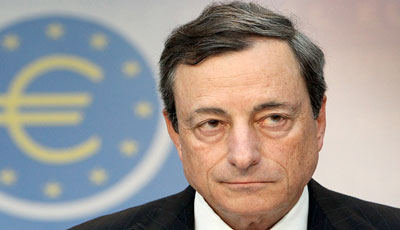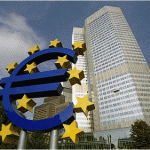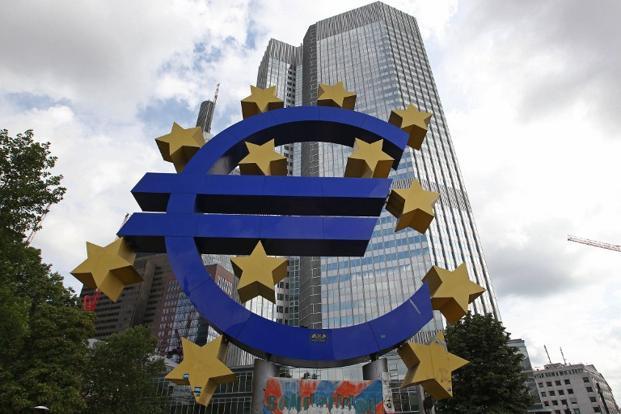Draghi Says Banks Shouldn’t Count on Another Carry Trade

Banks shouldn’t count on a fresh round of European Central Bank cash to trade sovereign debt and reap big profits, Mario Draghi said.
“The convenience to use the ECB cheap money to buy government bonds is much less” than in a previous funding round which started in 2011, the ECB president said in testimony to the European Parliament in Strasbourg, France yesterday. “The general situation is such that these carry trades are going to be much less profitable.”
As yields on government debt from Spain to Italy have fallen to record lows, a carry trade that was lucrative two years ago may now yield less, Draghi said. In a liquidity drive that pins cash to banks’ performance in extending loans to the economy, the Frankfurt-based ECB could extend as much as 1 trillion euros ($1.36 trillion) in its so-called TLTRO program starting in September.
A condition of that program is that banks have to meet a benchmark on lending to businesses and households, excluding mortgages, or else hand back the money in 2016.
“If banks don’t lend to the non-financial private sector, they’ll have to repay,” Draghi said.
Financial institutions will take up more than 700 billion euros and will increase credit to the real economy over the four-year span of the program, according to economists polled in a monthly Bloomberg News survey.
Four Years
The Targeted Longer-Term Refinancing Operation offers banks that meet the conditions funds that they can keep through 2018 at cheap rates, locking in an advantage that could build as the economy recovers and official rates rise.
The program will “in particular” enable banks to address bond refinancing needs, ECB Chief Economist Peter Praet told Les Echos in an interview published today.
“As a result, the banks will not only be encouraged to lend more and at more favorable conditions, but they will raise less funding on the markets,” Praet said, according to a transcript posted on the ECB’s website. “This liquidity will be returned to investors, which they can use to buy other assets.”
In 2011, the ECB started a liquidity plan that ultimately injected more than 1 trillion euros in 3-year money, much of which was used to fund purchases of sovereign debt. That helped to bring down yields across the euro area at the height of its debt crisis.
Domestic Demand
The region is now experiencing an economic recovery that’s increasingly driven by domestic demand, and that could mean demand for exports supported by global growth, Draghi said.
“The progress made in fiscal consolidation and structural reforms, as well as gains in real disposable income, is expected to provide positive impetus to growth over the next two years,” Draghi said, speaking at his first hearing at the parliament’s Economic and Monetary Affairs Committee since elections in May.
Risks to the economic outlook remain “on the downside,” Draghi said as he warned governments not to dial back efforts to control spending and budget deficits.
After a clash this month among European Union finance ministers on how much wiggle room countries can interpret from rules designed to keep deficits capped, Draghi said no new exemptions should be granted.
“The view of the ECB as far as flexibility is concerned is that the present rules already contain enough flexibility,” he said. “To think about flexibility only as the only way that countries have to restart growth, is actually pretty limited. One grows out of debt through growth, not through spending.”
Source: bloomberg




























